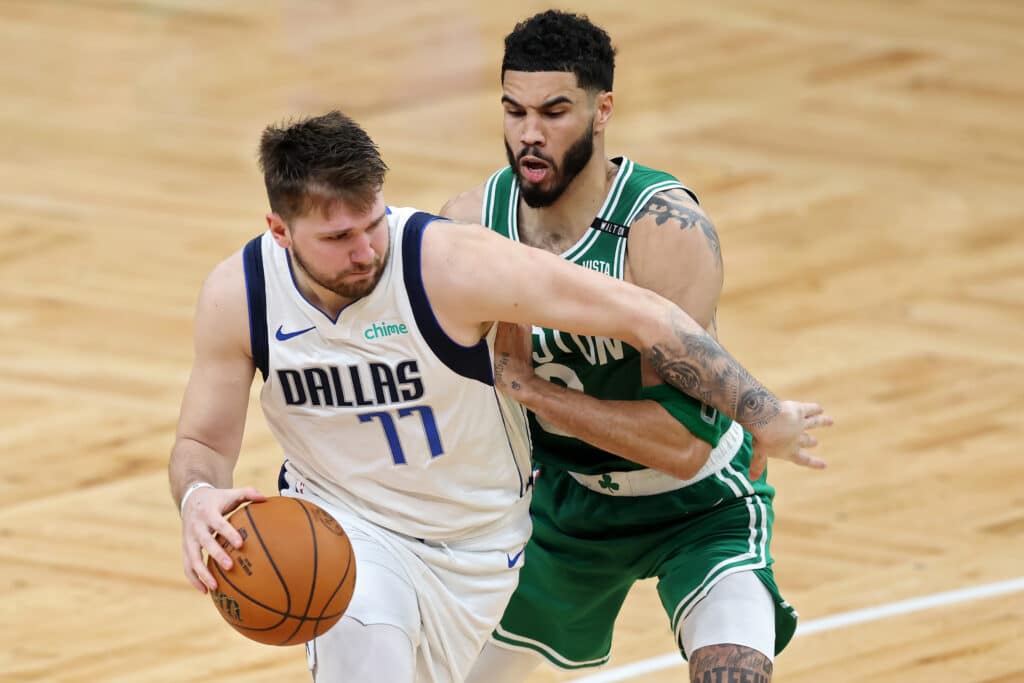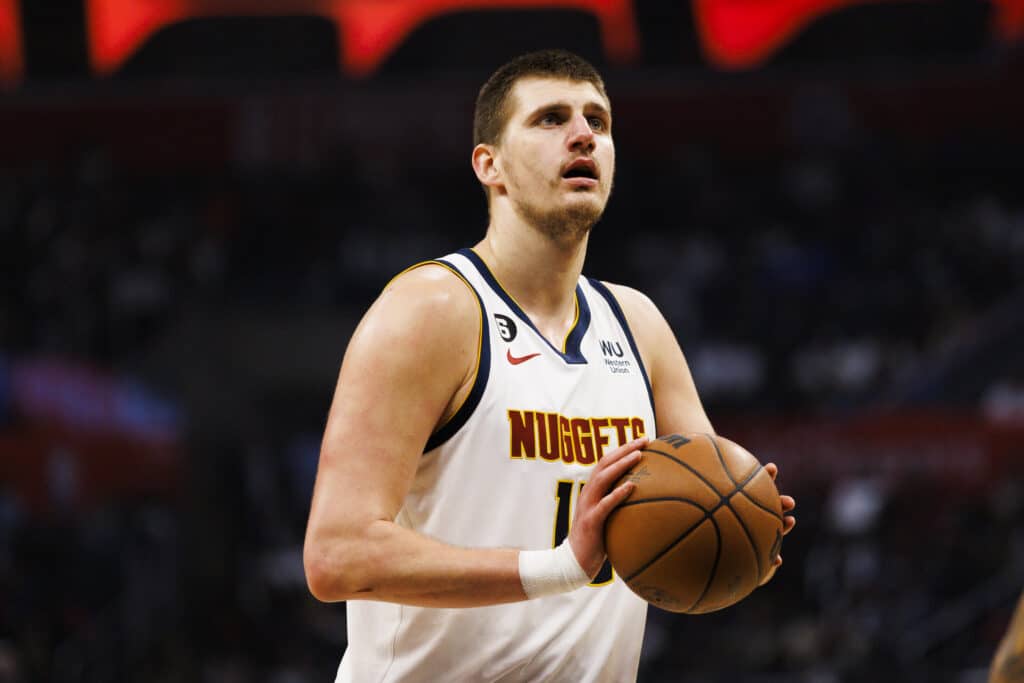What is the expected value of an NBA Draft pick?

As the anticipation builds for the 2024 NBA Draft, teams, analysts, and fans alike are engrossed in debates and discussions about the potential impact of the upcoming draftees. The NBA Draft is a pivotal event where franchises hope to select players who will transform their fortunes. However, it is often unclear which players to take and what realistic expectations to have of them. This uncertainty stems from the myriad variables that influence a player’s transition from collegiate or international basketball to the professional stage.
By analyzing historical data and trends, we provide a comprehensive guide to help teams and fans understand how a player, based on their draft position, should typically influence a team’s performance. Expected value, in this context, refers to the average contribution a player is likely to make, factoring in their draft position.
Historical analysis reveals that NBA draft position significantly correlates with a player’s career trajectory and impact on their team. For instance, top picks are often expected to become franchise cornerstones, while later picks might be seen as potential role players or projects with longer development timelines. However, there are always exceptions—players who vastly exceed or fall short of expectations.
NBA Draft
Pick One – The Crown Jewel of the NBA Draft: Consistent All-Star
If you get the first pick in the NBA Draft, you’ve lucked out. Chances are, your player will become a perennial All-Star. That is the expectation at least. Not every NBA draft class will feature a LeBron James, a Dwight Howard, or even a Victor Wembanyama, but that doesn’t mean that there isn’t exceptional talent in each class.
Since 2008, when Derrick Rose was taken first by the Chicago Bulls, there have been 16 first picks and only five haven’t become All-Stars (although this also includes Victor Wembanyama who will inevitably become one next year).
WOJ: “Victor Wembanyama is the singular greatest prospect in NBA draft history.”
— 365Scores (@365Scores) October 7, 2022
Thoughts?
pic.twitter.com/VofTGQRcZI
This high success rate underscores the immense value of the first overall pick, yet it also highlights the inherent risks and uncertainties in the draft process. Players like Blake Griffin, Kyrie Irving, Anthony Davis, and Zion Williamson have all validated their number-one selection with stellar performances and multiple All-Star appearances, setting high benchmarks for their successors. However, for every superstar, there are top picks like Anthony Bennett and Markelle Fultz, who struggled to meet the lofty expectations set upon them.
These variations in outcomes make the evaluation of draft picks a complex and nuanced process. Teams must weigh a player’s potential against their immediate impact and consider factors such as injuries, fit within the team’s system, and off-court behavior. The goal is to maximize the expected value of their pick, not just for the first overall selection but throughout the NBA draft. By analyzing trends and historical data, teams can better navigate the draft’s uncertainties, increasing their chances of securing players who can make significant contributions and perhaps even become the next franchise cornerstone.
Top Five Pick: All-Star / Consistent Starter
Landing a top-five pick in the NBA Draft is massive. Historically, these selections have a high probability of producing All-Stars or at least consistent starters who can significantly impact a team’s success. Players drafted within the top five are often seen as the most talented and NBA-ready prospects, expected to transition smoothly into the professional level and contribute right away.
Since 2010, just under half of all top-five picks have made it into an All-Star team (see below table), giving teams a pretty good chance of landing on a top prospect if they play their hand well.
| All-Stars | Not Quite |
| John Wall DeMarcus Cousins Kyrie AD Bradley Beal Victor Oladipo Andrew Wiggins Joel Embiid KAT D’Angelo Russell Kristaps Porziņģis Ben Simmons De’Aaron Fox Brandon Ingram Jaylen Brown Jayson Tatum Trae Young Jaren Jackson Jr Luka Doncic Zion Williamson Ja Morant Darius Garland Anthony Edwards LaMelo Ball Scottie Barnes | Evan Turner Derrick Favors Wes Johnson Derrick Williams Enes Kanter Tristan Thompson Jonas Valanciunas Michael Kidd-Gilchrist Dion Waiters Thomas Robinson Anthony Bennett Otto Porter Jr Cody Zeller Alex Len Jabari Parker Aaron Gordon Dante Exum Jahlil Okafor Mario Hezonja Dragan Bender Kris Dunn Markelle Fultz Lonzo Ball Josh Jackson Deandre Ayton Marvin Bagley III RJ Barrett De’Andre Hunter James Wiseman Patrick Williams Isaac Okoro Cade Cunningham Jalen Green Evan Mobley Jalen Suggs |
In recent years, the top-five picks have included superstars like Scottie Barnes, Luka Dončić, and Jayson Tatum. These players have not only become All-Stars but also central figures in their teams’ strategies and successes. Even those who haven’t reached superstar status, such as De’Aaron Fox and DeMarcus Cousins, have proven to be reliable and impactful starters, showcasing the depth of talent typically found in these early selections.

5-10 Pick: At Least Average Starter Quality
Drafting within the 5-10 range often brings expectations of acquiring at least an average starter quality player. These picks are typically prospects who, while perhaps not as heralded as the top five, possess significant talent and potential to make a notable impact on their teams. Historical examples like Damian Lillard, drafted 6th in 2012, and Klay Thompson, taken 11th in 2011, showcase the potential for these picks to exceed expectations and become All-Stars or even franchise players.
Generally, players picked in this range are expected to develop into reliable starters who can contribute solid minutes and stats, becoming integral parts of their teams’ rotations. An average example for what could be generally expected is a Colin Sexton type of player, who was drafted 8th in 2018 by the Cleveland Cavaliers and became a consistent starter for both the Cavs and now the Jazz.
10-15 Pick: Rotation Player
The 10-15 pick range is often used to find key rotation players who can provide substantial minutes off the bench or even start occasionally. These players are expected to bring depth and versatility to a team’s lineup. Notable players drafted in this range include Devin Booker (13th in 2015) and Giannis Antetokounmpo (15th in 2013), both of whom have vastly outperformed their NBA draft positions.
While not all players picked in this range reach such heights, many, like Kelly Oubre Jr. (15th in 2015), become reliable rotation players who offer valuable contributions on both ends of the court. An average example is Michael Porter Jr., who was drafted 14th in 2018 by the Denver Nuggets and has become a key rotation player and sometimes a starter.

15-30 Pick: Role Players
Selections from 15-30 generally aim to secure role players who can reliably give a team 10+ minutes per game. These players are often seen as specialists or developmental projects who can fill specific needs, such as three-point shooting, defense, or energy off the bench. Players like Pascal Siakam (27th in 2016) and Kyle Kuzma (27th in 2017) highlight the potential for late first-round picks to evolve into key contributors.
Teams selecting in this range hope to find players who can effectively support their core lineup and provide consistent, quality minutes in their roles. Cam Thomas is a good example. Drafted by the Nets in 2021 (also in 27th), he provided useful support from the bench and has been seen as a developmental project. He now plays close to 30 minutes a game and has been nurtured into a good scorer.
30-45 Pick: Depth
Picks between 30-45 often come with more modest expectations, typically projecting to be the 12th-15th men on the roster. These players are usually viewed as depth pieces, providing insurance against injuries and potential developmental upside. They might spend significant time in the G-League or on two-way contracts, honing their skills.
Examples of successful players from this range include Draymond Green (35th in 2012) and Jae Crowder (34th in 2012), who have carved out substantial NBA careers. However, the general expectation is that these players will mainly contribute in practice and fill in during less critical game situations.

Anything late in the second round: Hope
NBA Draft picks in the late second round, from 45 onward, are often viewed as lottery tickets with no guaranteed expectations. Teams hope these selections can surprise and develop into valuable contributors, but the success rate is much lower.
These picks are typically long-term projects or players with specific skills who need significant development. Notable success stories like Isaiah Thomas (60th in 2011) demonstrate that diamonds can indeed be found late, but the norm is that these players face an uphill battle to make an NBA roster. For the most part, teams have little to lose and everything to gain with these late-round gambles.
Read our full article on the best second-round draft picks in NBA history!
By Nicky Helfgott / @NickyH3lfgott on Twitter (X)
Keep up with all the latest NBA news and live scores on the 365Scores website and app!



